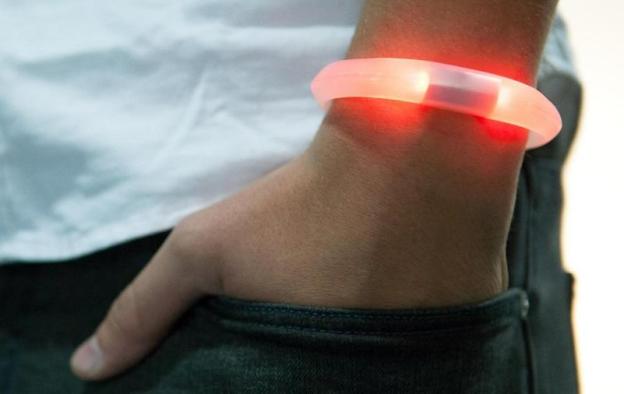
Already busting through a $80,000 funding goal on Kickstarter with a bit less than two weeks left in the campaign, the EMBRACE+ wristband is wearable tech that provides a visual notification when something important happens on your smartphone. Rather than pulling your phone out of a pocket or purse each time it makes a noise or vibrates, the EMBRACE+ wristband uses specific colors to indicate what type of notification just made your phone buzz. Receiving a text is probably more important than receiving a response to a tweet, thus the visual notification on the wristband allows you to differentiate between the two without checking the phone.

The wristband will also include a security feature that notifies the user when they are too far from the smartphone. This could be particularly helpful when a smartphone gets stolen or left behind at a public place like a restaurant or a bar.
When fully charged, the EMBRACE+ wristband should last for ten days before requiring a recharge. This rating is based on an average of 100 notifications per day. The battery also charges quickly; just ten minutes when connecting the micro-USB charging cable to a laptop. According to the developers, the team is currently focusing on the Android and iOS platforms. The EMBRACE+ wristband will be compatible with smartphones using Android 2.3 and up as well as iOS5 and iOS6. Regarding communication, the wristband connects to the smartphone over Bluetooth 2.1 or 4.0.
You will also be able to get all your notifications in the shower since the wristband is completely waterproof. According to the funding milestones that have been met on the Kickstarter page, there will be two alternate designs at launch, a rounded version and a grooved version. In addition, the team will be adding support for alarm and timer features as well a grandfather clock mode that will inform the user of the current hour using the glowing band.

Other milestones already met include multiple color housings as well as a software development kit for third parties to include EMBRACE+ functionality in their apps. Assuming the project hits a $210,000 funding milestone, the team will change from micro-USB charging to magnetic charging.
At this point in the process, the prototype is being finalized and the team will be setting up the molds and tooling for mass production. According to the details on the Kickstarter page, the delivery goal is set for a very ambitious July 2013 for all backer levels. This is somewhat surprising compared to other Kickstarter projects that typically have launch days three to six months in the future. The standard version of the EMBRACE+ wristband costs $49, but there are other backing levels for special editions of the wristband. As with all Kickstarter projects, be wary that manufacturing issues could cause significant delays in the delivery window of the item, some lasing multiple weeks or months.


